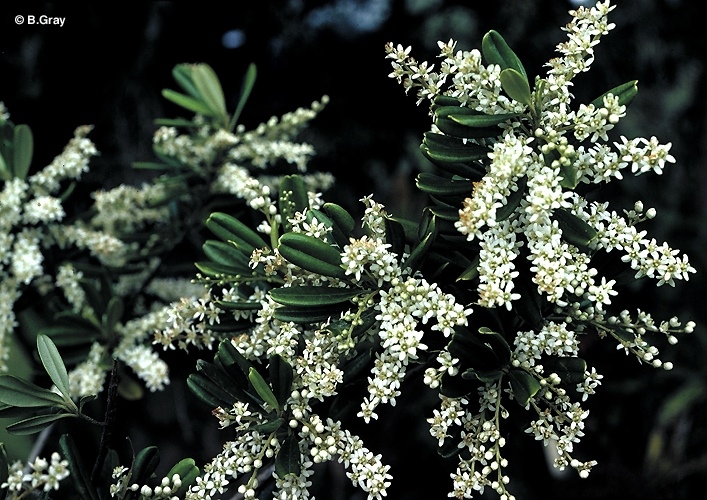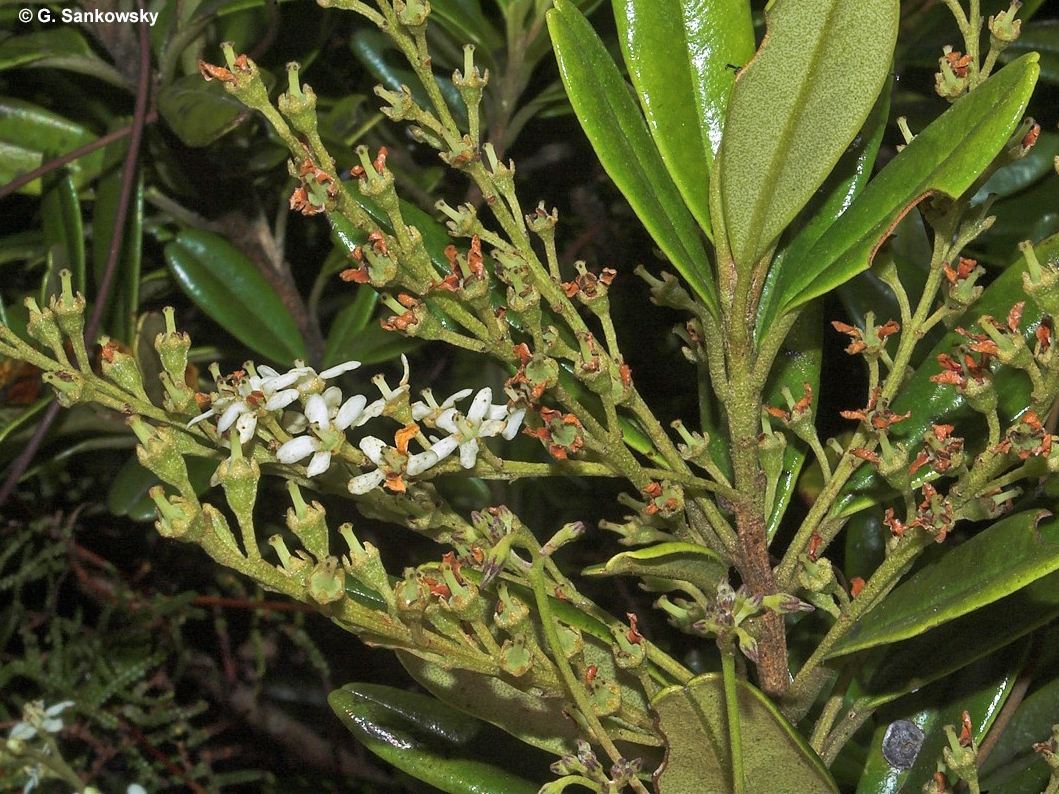Australian Tropical Rainforest Plants - Online edition
Quintinia fawkneri F.Muell.
Click/tap on images to enlarge

Flowers [not vouchered]. © G. Sankowsky

Inflorescences and flowers. © B. Gray

Inflorescences with immature fruit, and leaves [not vouchered]. © G. Sankowsky

Scale bar 10mm. © CSIRO

Vine stem transverse section. © CSIRO
Family
Mueller, F.J.H. von (1868) Fragmenta Phytographiae Australiae 6: 92. Type: In silvis montium apud sinum Rockinghami. Dallachy.
Common name
Climbing Quintinia; Quintinia, Climbing
Stem
Leaves
Leafy twigs densely clothed in scales. Leaf blades rather thick and leathery, about 15-50 x 10-30 mm, margins recurved, petioles about 2-9 mm long. Underside of the leaf blade completely covered by numerous white, brown or orange orbicular scales. Venation difficult to distinguish, about 6-8 veins on each side of the midrib.
Fruit
Capsules about 4 x 3 mm with 5 longitudinal ribs.
Seedlings
Features not available.
Distribution and Ecology
Natural History & Notes
An easily grown climber that can be trained over a fence or wall. Flowers are white in large bunches.
RFK Code
2059
Copyright © CSIRO 2020, all rights reserved.

Web edition hosted at https://apps.lucidcentral.org/rainforest




